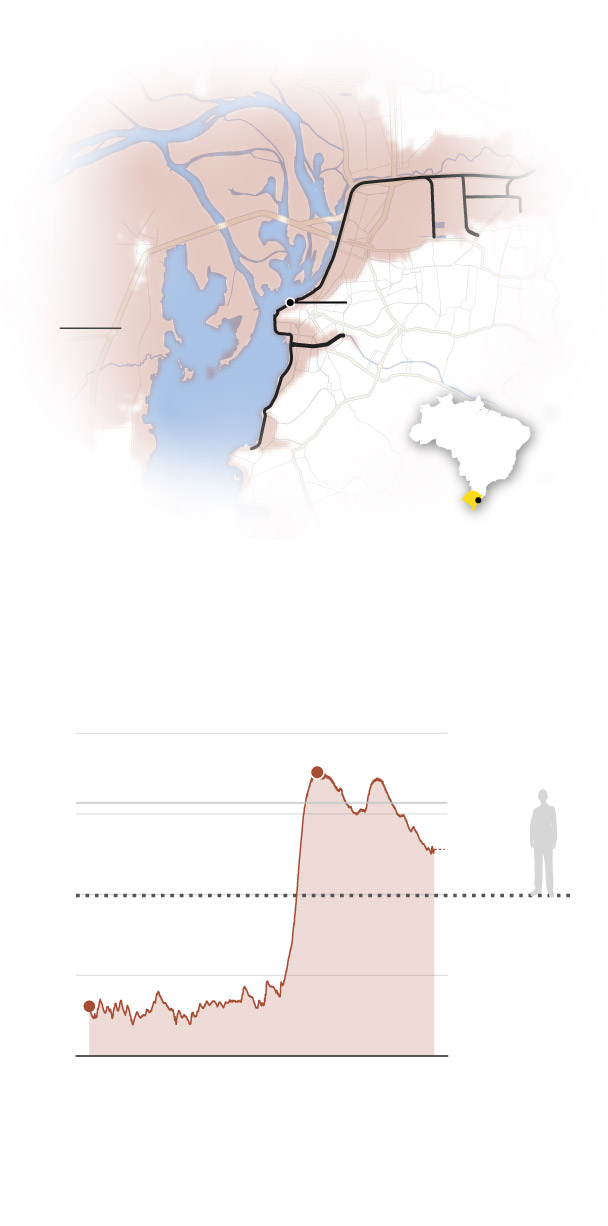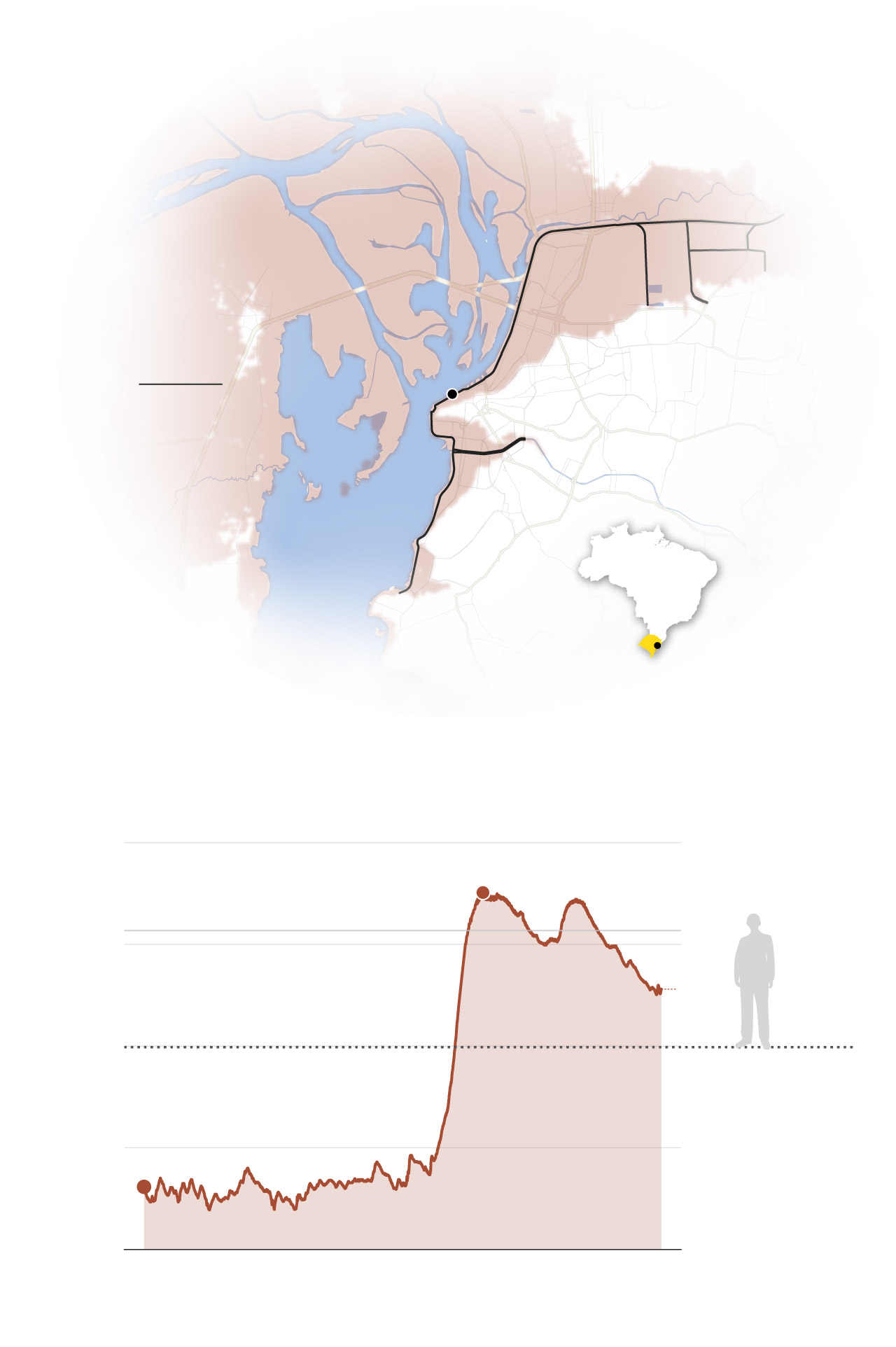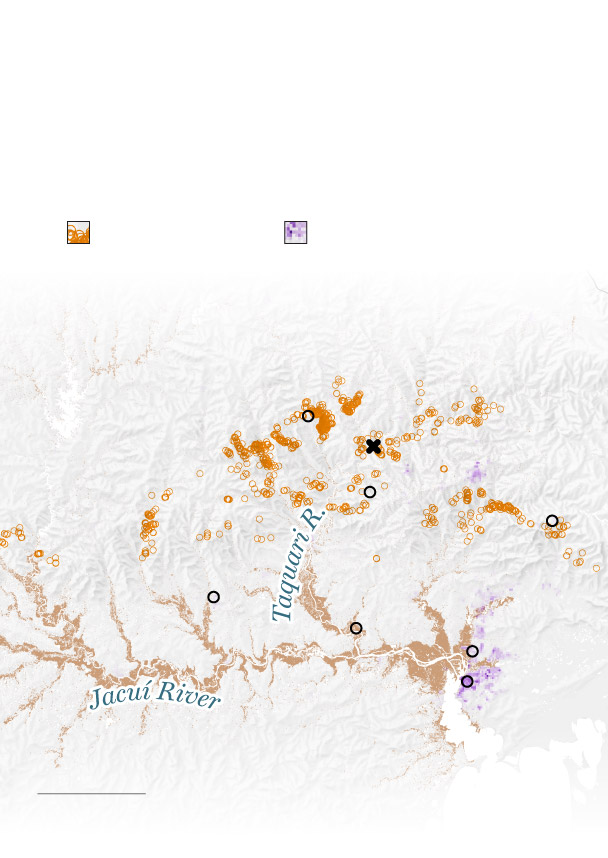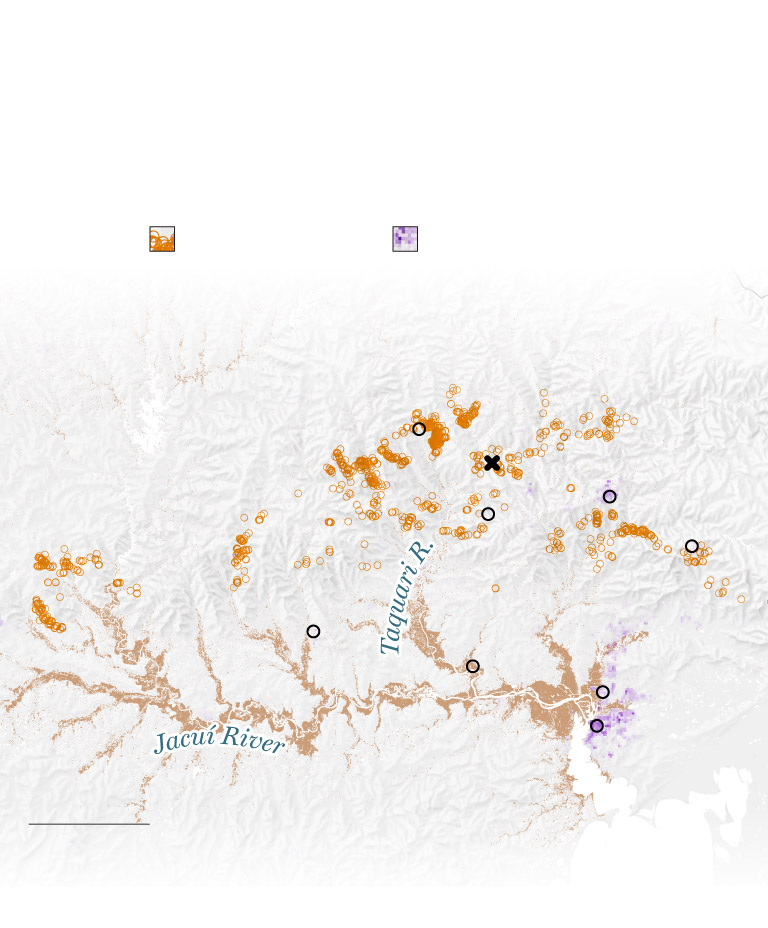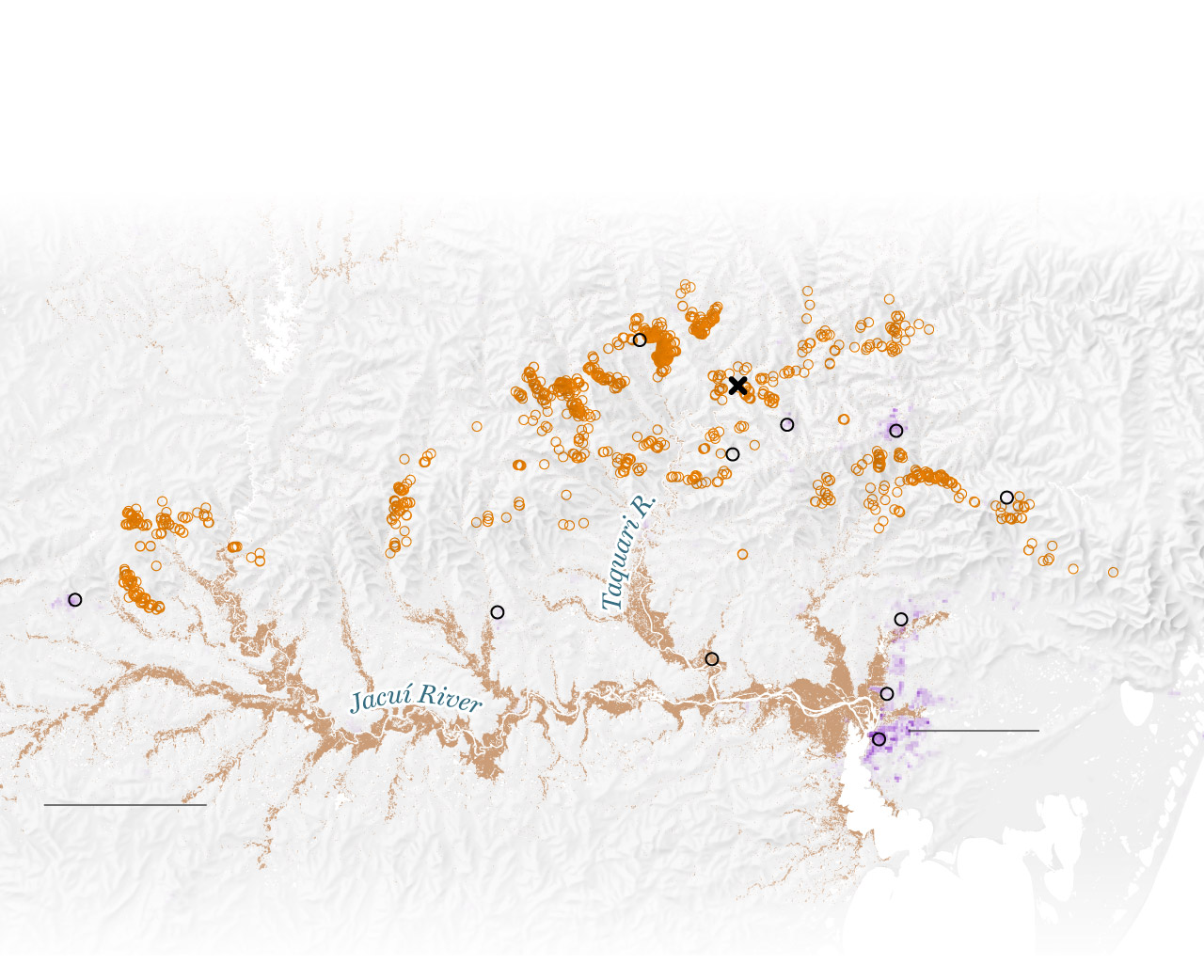Jos Tadeu was at home in Saranda, in Brazil’s southernmost state, Rio Grande do Sul, when he saw the water rise. When he hit my waist I thought, now or never, I have to get out of here, he said. He grabbed a bag with some clothes and documents and left. Jos is now in a university shelter with nine other family members. They are among more than 580,000 people displaced by massive floods that crippled southern Brazil in early May.
The unprecedented floods have paralyzed the state, home to more than 11 million people. The disaster has caused a displacement crisis and extensive infrastructure damage, leaving much of the area isolated. Although Brazil has faced frequent natural disasters in recent years, the scope and impact of these are particularly alarming.
More than 450 municipalities were flooded and many are still under water. The historic disaster killed 163 people, with many missing, and injured more than 800.
This is a view of the Brazilian state of Rio Grande do Sul in late April, from satellite imagery provider Maxar.
In early May, massive flooding engulfed the southern state, the worst disaster of its kind ever recorded in the area.
Although already surprising, this image represents only a part of the extent of the flooding in Rio Grande do Sul.
Flooding was observed in an area of at least 30,000 square miles, according to data from NASA’s Disaster Program. Government officials say more than 90 percent of the state’s municipalities and 2.3 million people were affected.
If placed over the East Coast of the United States, flooding will extend from northern Virginia to Maryland and spill into Delaware and West Virginia.
According to Luciano Zasso, a professor of geography at the state university, PUCRS, Rio Grande do Sul had about eight months’ worth of rainfall in the first half of May alone. Heavy rainfall caused the river system in the region to overflow, submerging many urban and rural areas.

In a press conference in early May, Governor Eduardo Leite said the floods are the worst disaster ever recorded in the state of Rio Grande do Sul. Perhaps one of the worst disasters the country has recorded in recent history.
The waters of Lake Guaba, which hugs the coast of the state capital Porto Alegre, rose to 17 feet in early May, a level not seen since 1941.
A map shows that the coasts of Porto Alegre, Canoas and Eldorado do Sul, all near bodies of water, were flooded. A chart shows that water levels at a pier on the Jacu River, near the cities, rose to 17.4 feet on May 5, well above the level that the river walls can contain. It is also the highest since 1941.
The rapid rise, far higher than the city’s barriers could hold, submerged most of the urban areas along the coast.
For Zasso, the extreme event was the result of a combination of factors. In addition to unusually high rainfall, global warming and recent population growth in vulnerable areas may have contributed to the flooding. In the last decade, we have seen a high rate of layoffs, he said. This leads to the removal of natural vegetation that protects rivers from flooding.
Porto Alegre and its neighboring city of Canoas, both located by water, were severely affected. In the state capital alone, about 40,000 buildings were damaged, according to a government analysis. Among them were homes, schools, hospitals, commercial offices and retailers.
Ivanir de Ftima Fragoso, who has lived in a Porto Alegre neighborhood near the Jacu River for the past 34 years, said she has seen floods come and go over the years, but this time is different. Before, we would lose some things, but we could heal, repair, wait for it to dry, she said. Not now. My house is completely under water. I lost everything.
A satellite image of the coast of Porto Alegre and the neighboring city of Canoas from May 7 shows many residences, businesses, a stadium and airport under water.
The capital suffered major infrastructural damage. The city’s airport, train station and bus station were flooded. Several roads leading to the city were blocked due to high water levels.
The municipality of Porto Alegre was surrounded by water. Flooding also reached government data centers, which were forced to shut down, halting many government services.

Three weeks after the heaviest rainfall, state authorities are still reporting more than 80,000 locations without power. Many still do not have water or internet services.
Chaos also ensued in smaller towns along the Taquari River, which runs through Rio Grande do Sul. Many in more isolated areas had to be rescued by helicopter.


The water engulfed two football arenas in the capital. In this one, in northern Porto Alegre, nearly three feet of water soaked the field.
Flooding left planes stranded on the tarmac at Porto Alegre’s international airport. The airport lobby was completely flooded.
West of the capital, parts of the Taquari River reached 89 feet, a level not seen in almost 70 years. Many small towns along the water were destroyed.
One of them is the town of Taquari, where at least 1,300 people were displaced by the floods. Many residents who relied on agriculture and livestock for a living lost everything. Government officials say the agricultural recovery could take a year.
Conditions are unlikely to improve until June and could worsen. The rain triggered hundreds of landslides across the state, leaving residents stranded and waiting for rescue. A hydroelectric dam in the northwestern part of the state partially collapsed due to flooding. Another is at imminent risk of collapse, according to the state government. Six others are on high alert.
Map showing landslides in Rio Grande do Sul from April 20 to May 8
In an exclusive statement to The Washington Post, Brazilian President Luiz Incio Lula da Silva blamed the tragedy on the failures of the global community to respond to climate change. This was the third record flood in the same region of the country in less than a year, Lula told The Post. We and the world must prepare every day with more plans and resources to deal with extreme climate events.
Rio Grande do Sul’s road to recovery will be long and arduous. Flooded houses will need fixing. Collapsed bridges will need reconstruction. Authorities say the international airport in Porto Alegre will remain closed until September.
Last week, Governor Leite announced that the state will build temporary housing for affected residents in four towns on the east coast of the state, including the capital.
Meanwhile, more than 65,000 people are sheltering in schools and gymnasiums across the state, waiting for water levels to recede so they can return and check on their homes. Fragoso, who fled her home in Porto Alegre, is one of them. For him, the main challenge is ahead. The tragedy was serious, but now it will be even more serious. Going home to see what’s left will do nothing, she said.
About this story
Marina Dias and Terrence McCoy contributed to this report from Brazil. Graphic editing by Samuel Granados. Copy editing by Rebecca Branford.
Sources: Statewide flood extent data is from the NASA Disaster Program and is derived from two OPERA DSWx-HLS images acquired on April 21 and May 6, 2024. Landslide data is also from NASA and include events detected between April 20 and May 8, 2024. The data is not exhaustive and cloud-covered areas are not included. Satellite images are from Maxar Technologies. Data on Brazilian water bodies are from the Agncia Nacional de guas (National Water Agency). Data on the extent of flooding around Porto Alegre is from the Institute of Hydraulic Research at the Federal University of Rio Grande do Sul (IPH/UFRGS) and is based on observations made on May 6. Population data is from WorldPop. Data on water levels at the Mau Pier are from Hydrotelemetry.
#Visualizing #scale #floods #left #southern #Brazil #water
Image Source : www.washingtonpost.com

